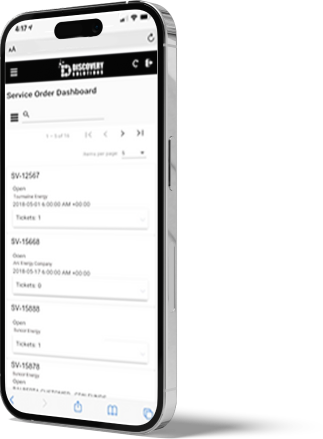Understanding Profitability: A Must for Oilfield Service Companies



In today's dynamic business landscape, the devil is often in the details. For Small and Medium-sized Businesses (SMBs), especially those in the Oilfield Service sector, a comprehensive grasp of profitability can make the difference between growth and stagnation. But what exactly does this entail?
Delving into the Costs
The first step in understanding profitability is to have an unambiguous insight into the costs associated with running your business. For an Oilfield Service company, this can range from equipment costs, licensing, site rents, to subcontractor charges, among many others.
It's not enough to have a general idea; businesses need to break down costs to a granular level. This detailed visibility allows them to identify areas of inefficiencies, eliminate unnecessary expenses, and make informed decisions about where to invest for maximum ROI.
Depreciation: The Silent Drain on Profit
Depreciation is often an overlooked factor when considering profitability. Yet, for companies with significant capital investments, such as oil rigs, machinery, and vehicles, depreciation can have a substantial impact on the bottom line.
Understanding how assets depreciate over time helps in making informed decisions about asset management and replacement. Additionally, it aids in tax planning, ensuring companies take full advantage of allowable deductions.
Labour Variability: The Moving Target
For many businesses, labour is one of the most significant costs. However, in sectors like Oilfield Services, where project scopes can vary immensely, labour costs can be highly variable.
This variability means that understanding and forecasting labour costs is not just about knowing hourly rates but also about estimating the number of hours a project might take. Misjudging this can lead to overstaffing, leading to unnecessary costs, or understaffing, which can result in project delays and potential penalties.

Incorporating Costs into Pricing
Having a detailed grasp of the above elements is critical when it comes to pricing services. To ensure profitability, businesses must price their services in a manner that not only covers all costs but also accounts for desired profit margins.
Without a deep understanding of all the elements affecting profitability, companies can easily find themselves underpricing their services, resulting in reduced profits, or overpricing and potentially losing customers to competitors.
Why Quick Fixes Like Bolt-on Software Aren't Enough
Many SMBs initially turn to bolt-on software solutions for platforms like QuickBooks or Sage, hoping to streamline their financial processes. However, while these can offer some advantages, they often fall short in providing the comprehensive visibility and functionality required for detailed profitability analysis.
The patchwork approach can lead to integration issues, data silos, and inefficiencies, ultimately costing the company more in the long run.

The Power of an ERP System
For companies serious about understanding and enhancing their profitability, an Enterprise Resource Planning (ERP) system is indispensable. ERP systems offer an integrated approach to business processes, from finance to procurement.
With everything housed under one unified system, businesses can ensure data accuracy, real-time visibility, and seamless process flows. This allows for more accurate forecasting, better decision-making, and ultimately, enhanced profitability.
Conclusion
In the complex environment of Oilfield Service companies, understanding the intricacies of profitability isn't a luxury—it's a necessity. By diving deep into costs, considering depreciation, and managing labour variability, businesses can set themselves up for success. And with the power of an ERP system behind them, they're equipped to handle the challenges of today and the opportunities of tomorrow.

Book a Call





